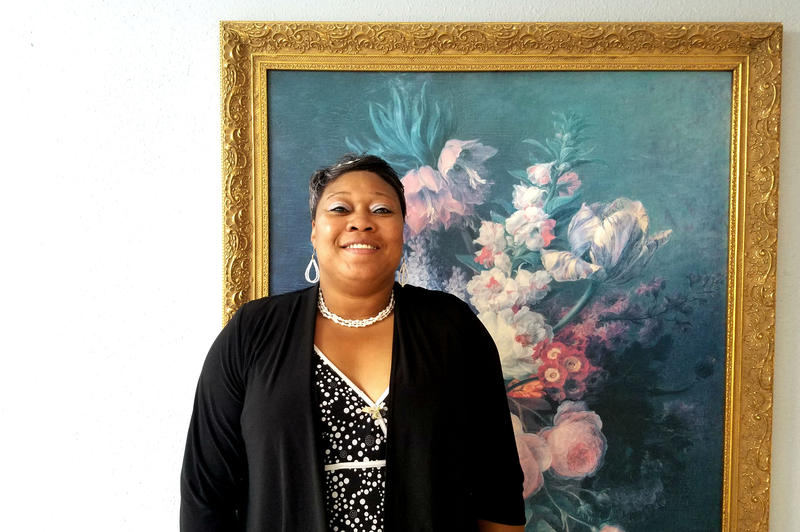From KERA:
HIV is no longer considered a death sentence in the United States, and people living with HIV are living longer. That’s largely thanks to antiretroviral drugs, which were first introduced 30 years ago.
As the earliest survivors are growing older, though, doctors are discovering new health challenges related to HIV.
Early days with HIV
In 1993, Linda Malone was pregnant and soon-to-be married. She had also just been diagnosed with HIV.
“I felt like my life was over, that no one could love me because of the way people had been talking about people with AIDS, about how filthy and immoral it was,” she says.
Neither her daughter nor her husband ultimately contracted the virus – and Malone’s doctor chose not to start her on any kind of HIV treatment. Back then, HIV drugs were crude and harsh on the body, and she felt fine without them.
“The HIV in my body hadn’t really affected me,” Malone says. “I’ve never been in the hospital for HIV, never had pneumonia or the flu.”
At the time, Malone was also struggling with an addiction to crack – and ended up in prison in 1997. It was there that her health started to take a turn. Her lymph nodes began to swell and her CD4 count, which measures the number of infection-fighting white blood cells in the body, had plummeted, too. Both were signs that her HIV had begun to progress.
“So they put me on HIV medication while I was in prison, but that medicine was so strong though that it caused me to have peripheral neuropathy – like every nerve in my body damaged except for my brain and spinal cord. I had this severe pain,” she said. “It also messed with the nerves in my stomach, so I couldn’t hold anything in my stomach. It was like I wasting [away].”
Medicated for more than a decade
Today, Malone takes Complera – one pill a day – and her HIV is under control. She’s 49 – clean, working to become a licensed chemical dependency counselor, and also advocating for homeless people living with HIV/AIDS at Samaritan House in Fort Worth, where she also lives and is on the board.
Malone has been on HIV medication for 16 years now, and said it’s starting to take a toll.
“We’ve managed to keep HIV patients alive for a very long time, but now they’re having a different set of issues,” said Dr. Anuja Ghorpade, who is the interim vice president of research at the University of North Texas Health Science Center in Fort Worth.
Ghorpade’s researched HIV for decades and is now investigating what happens to people living with HIV as they grow older.
“There [are] cardiovascular diseases, metabolic disorders,” Ghorpade says. “They also have lipodystrophy, the abnormal distribution of fats in their body.”
Older HIV patients are also at a higher risk for depression – five times more likely than the general population. Certain cancers, heart attacks and late-stage kidney failure are common, too. Ghorpade and her team are specifically studying what happens to astrocytes, or the “glue” in the brain that protects nerve cells. HIV damages the brain over time, and even on drugs, Ghorpade says 50-70 percent of HIV patients will experience some form of neurological impairment.
These are all known as “morbidities,” and as people living with HIV age, they’ll often experience several of these conditions at once. Ghorpade said while people with HIV are living longer, they’re also aging much faster and more severely than those who don’t have HIV.
That’s largely because prolonged antiretroviral drug use can be highly toxic. Those drugs saved their lives – but at great costs to their health.
“We now look at [HIV] as this chronic treatable disease, but what people don’t necessarily consider is it’s not a great disease to live with. It can be like taking chemotherapy for the rest of your life,” says Kathleen Borgmann, a lab manager for cell biology and immunology at UNTHSC, who’s worked with Ghorpade for years.
HIV research, treatment need to evolve, experts say
At 49, Linda Malone struggles with depression and feelings of isolation. She worries about muscle loss and weakening bones. To this day, she still feels nerve pain that’s carried over from the first round of meds she took back in prison. She also has high blood pressure and diabetes.
“I’m experiencing some side effects from the meds now – like relocation of fat around my middle,” she says as she grabbed at parts of her abdomen. “It’s putting its fat here, but there’s still something I can do. I can exercise. I don’t have the money to get lipodystrophy surgery and all that stuff, but what I can do is exercise, eat better. That’ll help. People with HIV need to really take care of themselves. They need to be doing something positive.”
What doctors and researchers have to tackle now is how to best care for patients who are experiencing several of these morbidities at the same time. Both Ghorpade and Borgmann agree: HIV research and treatment need to evolve.
“What happens if an HIV-infected patient gets Alzheimer’s – or any of the other diseases that we would never have seen because that patient would have never been alive that long?” Ghorpade says. “The morbidity and the change in your life over time as these patients age is only going to get worse. And the burden of compounding those diseases is going to be a societal burden.”
Today, about 45 percent of people living with HIV in the U.S. are 50 or older. In four years, that number is expected to grow to 70 percent. That makes this age group one of the fastest growing segments of the HIV population – many of whom were diagnosed at the height of the HIV epidemic and have been taking antiretrovirals or antivirals for decades.
There’s not a cure for HIV – not yet anyway. And doctors can’t exactly take their patients off anti-HIV medications. Ghorpade said that means doctors need to understand how to provide well-rounded, multi-faceted care.
‘Culturally competent care’
The Fenway Institute in Boston, a national research and policy group focused on LGBT health, helps doctors do just that. Last year, the institute laid out steps on how to better care for older adults living with HIV – like screen for comorbidities, treat drug use, provide sexual education and help strengthen social support networks.
“A lot of them are living alone. They may have lost a lot of their friends to the epidemic in the early stages of the epidemic – particularly a lot of older gay men living with HIV,” says Sean Cahill, who directs health policy and research at the Fenway Institute. “They’re less likely to have kids as well, and so they may not have the built-in caregivers that elderly people in this country rely upon.”
Cahill says medical service providers need to practice “culturally competent care,” which is affirming, non-judgmental and takes into account the unique issues people with HIV face – like the fact that some haven’t disclosed their sexual orientation or HIV status to anyone. In those instances, treatment needs to be handled with discretion. Identifying transgender patients by the pronouns they prefer is also encouraged to ensure trust. Then, there’s properly and sensitively addressing race.
“There’s a huge amount of medical mistrust particularly among the black community in this country,” says Cahill. “And African Americans are disproportionately burdened by HIV. So understanding the reasons for medical mistrust but also ways to ensure people that as a healthcare provider you have their best interests at heart.”
Cahill says culturally competent care is necessary as stigma surrounding HIV still lingers – a stigma Linda Malone still fights every day.
“If I got cancer, people would take care of me. If I got diabetes, people would let me come stay with them and take me in, but they’re not afraid they’re going to get it,” she says. “But I’m using the bathroom behind them, or eating off the spoon with them or drinking out of the cup with them and I [have] HIV – people are just afraid.”
It wasn’t until Malone found her community at Samaritan House that she stopped feeling isolated, that she felt she could love herself again. She said she’s made plenty of mistakes in her life. Neglecting her health or her happiness won’t be another.
















